The inclusion of Shinto elements in manga and anime has been a notable feature of popular culture in contemporary Japan. The following is taken from a much longer posting by Jonathan Tappan, a software developer, which covers much of the general history and customs of Shinto in remarkably informed manner. (For the full article, see here.)
********************************************************************
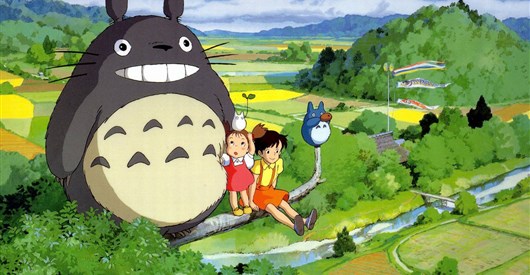
Publicity shot for 'My Neighbour Totoro" (1989)
Religious sites and artifacts appear constantly [in anime]. Clerical characters such as monks and mikos are regularly included in the cast. (Imagine if a high percentage of American TV shows included a nun with supernatural powers.) Ordinary characters routinely pause to engage in some sort of religious observance.
Sometimes the religious elements aren’t obvious to outsiders. Most Americans who watch My Neighbor Totoro would never think of it as a religious movie, yet it is loaded with Shinto symbolism (and to a lesser extent, Buddhist symbolism.) Shinto in particular is so different from what Americans think of as a religion that references to it are sometimes overlooked.
Even those Japanese who do not think of Shinto as literally true tend to think of it as a key part of their national and cultural identity. One reason that anime characters are so often shown visiting or praying at a Shinto shrine is that this is an easy way to establish that they are Japanese and proud of it, without invoking nationalistic symbolism that might be seen as militaristic and controversial.
Even secular symbols of the nation often show a Shinto influence. The Japanese flag for example features a red disk, representing the sun goddess Amaterasu, on a white field representing purity.
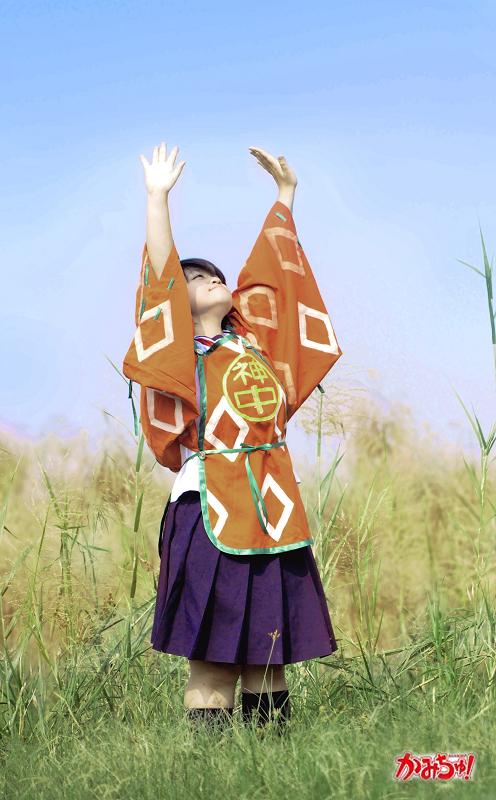
Kamichuu - nickname for a possessed schoolgirl made up of the words 'kami' and 'chuu' as in chuugakou or middle high school.
THE SHINTO WORLDVIEW
Kami
Shinto is a type of “animism”, the belief that all things in nature have unique spirits (anima in Latin, kami in Japanese). In fact it is broader than that, since even man-made objects are sometimes though of as having kami. The popular anime Kamichuu!, which presents Shinto beliefs in a whimsical but respectful manner, even shows us kami for obsolete video disc formats. The Kanda Shrine in Akihabara offers ceremonies to purify cell phones, which implies that they must have kami of their own.
Though any spirit might be considered a kami, the word is usually reserved for the very pure spirits that have shrines dedicated to them. Lesser spirits, which may be mischievous or malevolent, are usually referred to with terms like youkai, bakemono, or yuurei (ghosts).
Purity
The concept of purity is central to Shinto. Purity is thought to promote happiness and good fortune, while impurity (kegare) leads to the opposite.
Purity and impurity are not quite the same as good and evil. One might support a bad cause with a pure heart; indeed this would be more admirable that halfheartedly supporting a good cause.
In order to promote purity one should live a simple life in harmony with nature, honor traditions and one’s family, maintain physical cleanliness, and avoid contact with impure people and things. Since this is not always practical, much of Shinto practice is devoted to purification rituals.
The most common purification rituals involve water. This may be as simple as a shopkeeper splashing water outside the entrance of her shop to keep out impure spirits. Anime often shows images of a more extreme practice in which white-clad worshipers stand praying under a mountain waterfall.
In principle any kind of bathing might be considered a purification ritual, which helps explain the culture’s obsession with cleanliness and is one of the main reasons why anime characters are so often shown taking baths.
Other techniques include throwing salt at an impure spirit, or chanting prayers while waving an oonusa (a wand with paper streamers) at the thing to be purified.
Shrines
At the Washinomiya shrine, which was used as the model for the shrine in Lucky Star,hordes of crazed otaku have hung thousands of ema expressing their devotion to the characters, and in some cases their desire to marry them. This is a very ancient and important shrine and some people have complained that these are not suitable kami for people to be worshiping there, but the shrine has attempted to accommodate the fans by including the characters in its annual festival.
Shrines also sell omikuji or paper fortunes. These are folded strips of paper that say things like “good fortune”, “bad fortune”, “medium fortune”, “very bad fortune”, etc. If you get a good one you should take it home with you. If you get a bad one you are supposed to tie it to a tree or wire rack at the shrine for the kami to take care of. (The kami, being a very pure spirit, should have lots of good fortune to share.)
To deal with common life problems, shrines sell a variety of omamori or protective amulets. Typical omamori provide for things like safe childbirth, safe driving, finding a good spouse, good health, business success or passing one’s school exams.
I can’t leave the subject of shrines without mentioning the mikos or shrine maidens who are often seen at busy shrines selling charms or fortunes or giving directions to visitors. These are among the most popular character types in manga and anime, beloved as embodiments of purity and credited with supernatural powers for fighting evil.
“Miko” is sometimes translated as “priestess”, but this is misleading. A miko is an unmarried young woman who volunteers or works part-time at the shrine. Mikos perform routine non-spiritual tasks and also assist priests in performing rituals. Sometimes mikos perform a kagura, or ceremonial dance.
In past eras the miko had a more central role in the religion. The kagura was used for divination; the dancing miko would go into a trance, be possessed by a spirit and make oracular pronouncements (as shown in Akira Kurosawa’s classic film Rashomon). This is rarely done today.
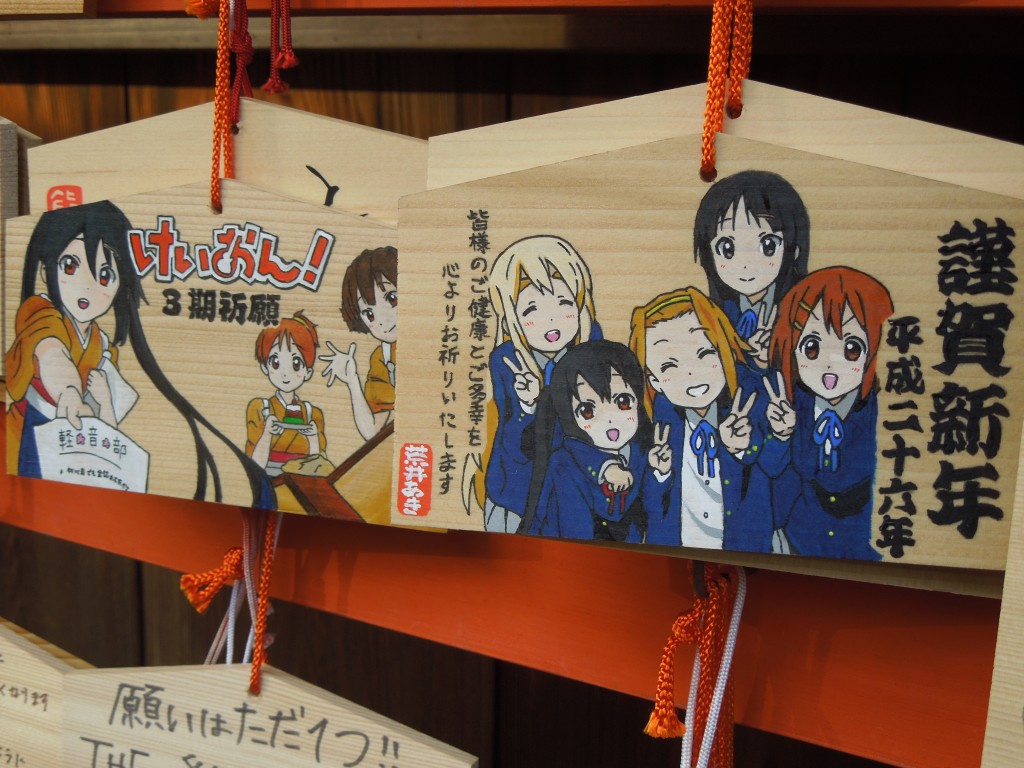
At shrines in recent years it's increasingly common to see 'ema' prayer tablets influenced by manga or anime
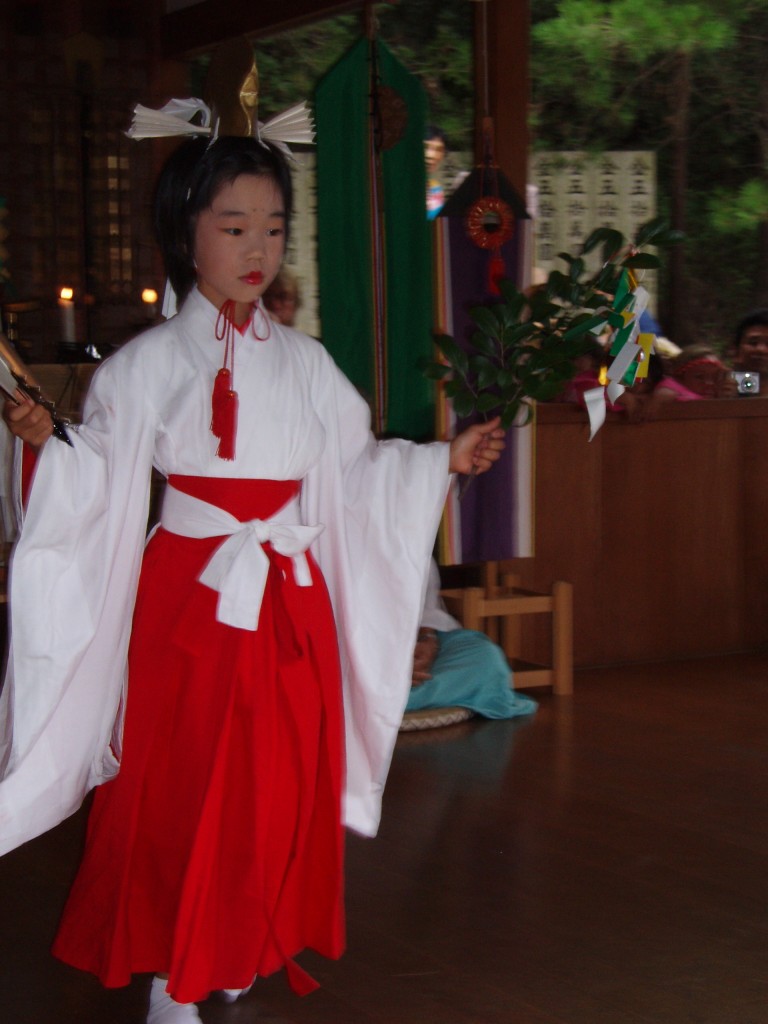
Miko are often taken up as glamour stars of manga and anime

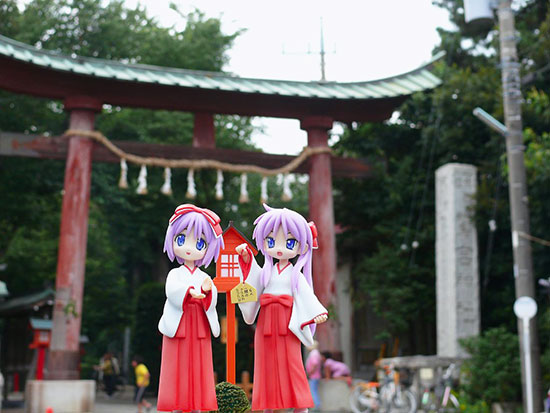
Even if you climb to the highest mountain, you can only take a step on the ground
Every journey begins with a single step…